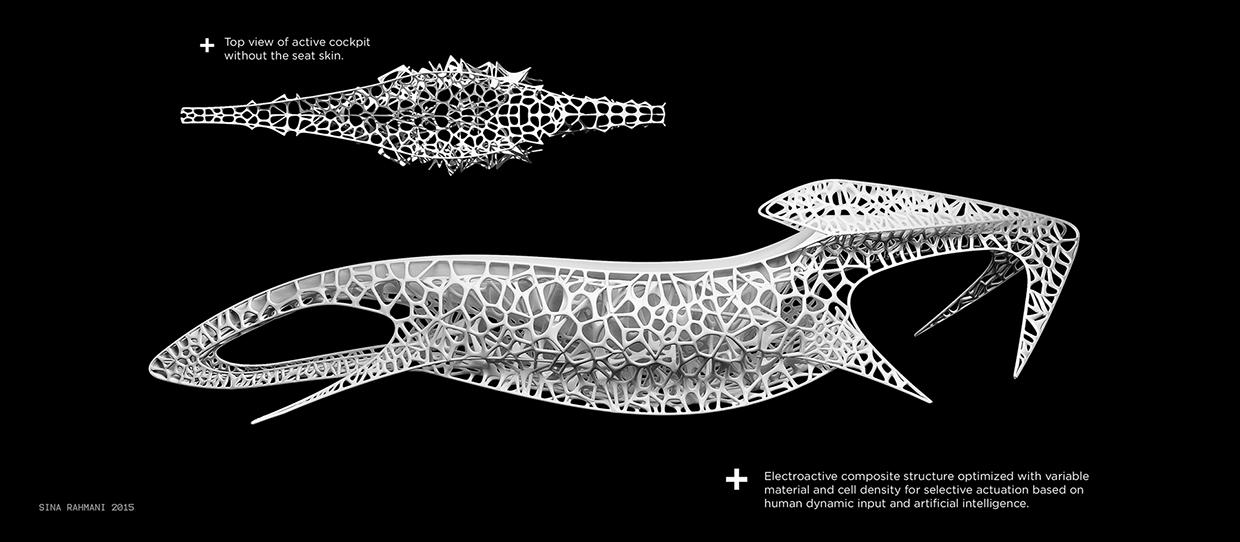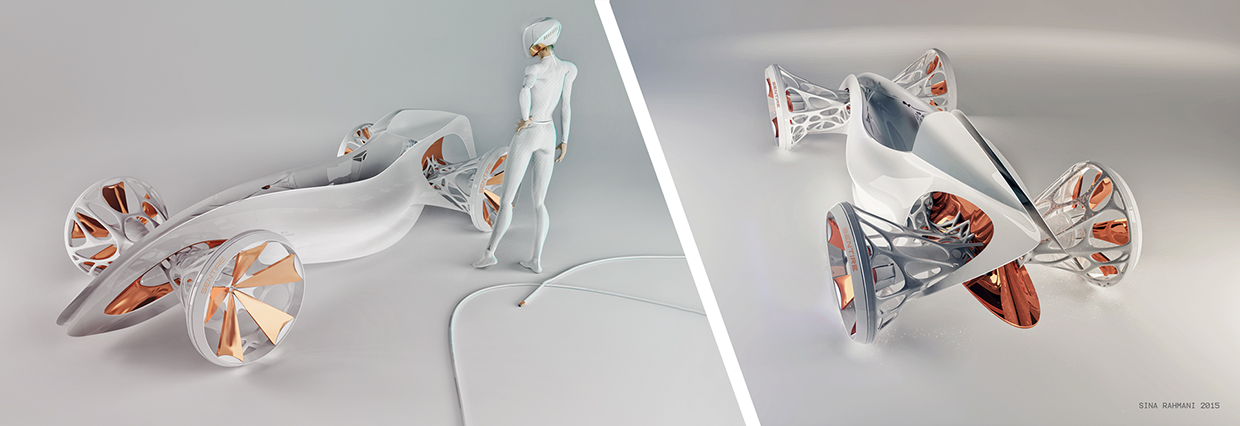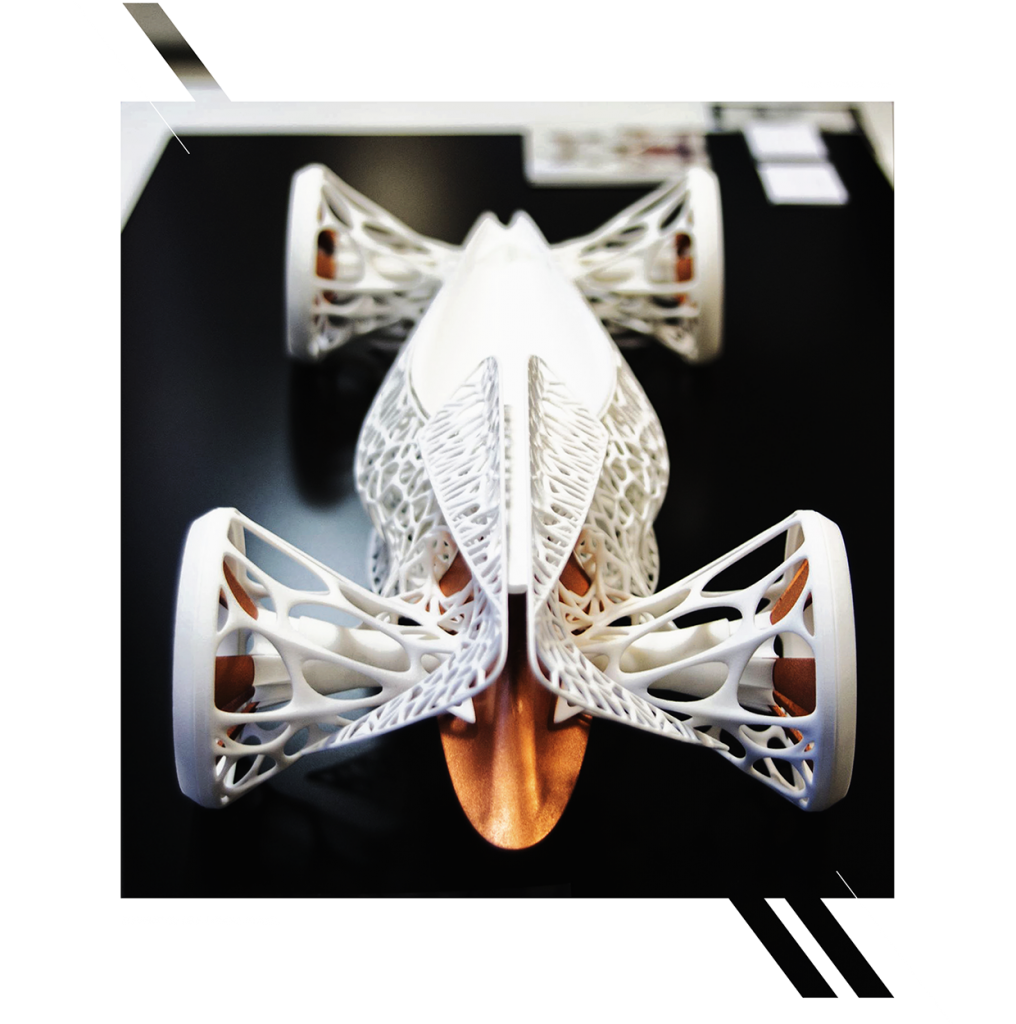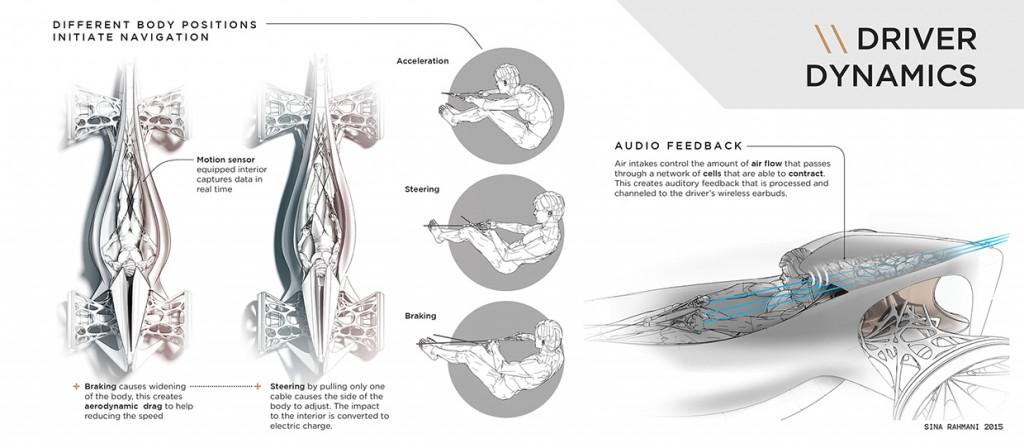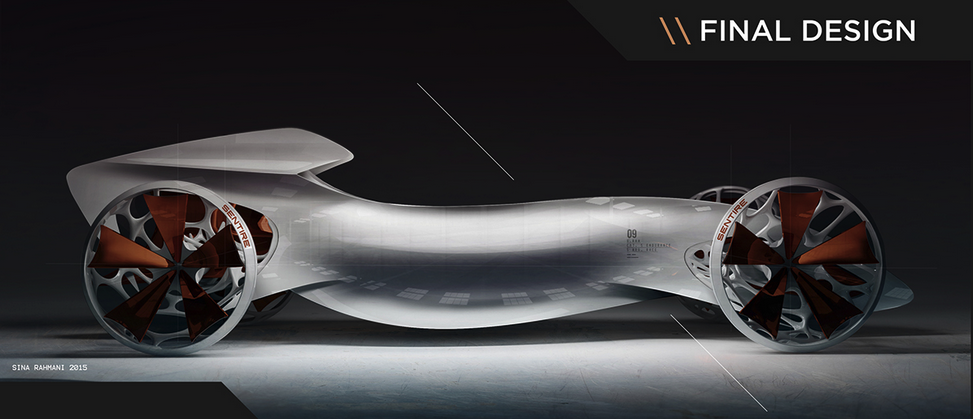 Imagine that we wake up in the year 2035, a time when artificial intelligence is greatly improved, and 3D printing has the ability to fabricate much more than what it can today. Perhaps there are flying cars, maybe we have holographic friends, and it’s even possible that we have reached the point of singularity. Once this happens, virtually anything could conceivably be possible.
Imagine that we wake up in the year 2035, a time when artificial intelligence is greatly improved, and 3D printing has the ability to fabricate much more than what it can today. Perhaps there are flying cars, maybe we have holographic friends, and it’s even possible that we have reached the point of singularity. Once this happens, virtually anything could conceivably be possible.
One student at the Coventry School of Art & Design, named Sina Rahmani, as part of his MDES Thesis, he decided to use 3D printing to conceptualize a future that he envisions. He dreamt up what he sees the future holding for the year 2035.
That future is based quite a bit on “sentire,” a term that describes the study of human-technology interaction, where design meets biology. In doing so, Rahmani came up with a truly incredible design for a vehicle that “pushes the experience of driving to a true sport that is dynamic by using all of one’s senses.” “Sentire” also happens to be the name of Rahmani’s thesis.
“Sentire grew out of the need for…more physical interactions with technology and machines,” Rahmani tells 3DPrint.com “If you would imagine a world where artificial intelligence is as intelligent as humans, 3D printing is possible in nano-scale, and cars are autonomous, we would lack physical activity because of automation. This scenario is actually possible by the year 2035. The problem is that our biological bodies are made to move, and motion is the essence of our lives.”
Rahmani’s idea takes a spin on automobiles that probably very few have ever imagined. What if the vehicles we drive could be integrated into our own bodies, controlled flawlessly with our minds and actions? What if driving a car could actually be an athletic sport within itself, that promotes well being in the same way as jogging on a treadmill does today?
“[My idea] uses emerging technologies such as AI, 3D Printing and self-actuating materials to create a design that is dynamic by use of senses and actuators,” Rahmani tells us. “The design features an electro-active skin and structure that is able to adapt based on the simultaneous input of the driver and the AI.”
The idea is one which certainly seems feasible, especially at the rate in which technology and 3D printing have been evolving.
Rahman didn’t simply conceptualize this unique idea, but he actually fabricated a 1:6 scale model of his fascinating vehicle. Using Grasshopper, he generated a complex Voronoi structure that has variable density for selective movement and strength. As many of you know, Voronoi cells are found throughout nature, such as in leaves, sandstone structures and even human bones. After he generated this structure, he 3D printed the vehicle on an SLS 3D printer using nylon powder.
“The aim with the physical prototype was to display a natural form that is complex enough to be only replicated by 3D printing or nature itself,” Rahmani tells us. “Although there are no plans to bring this conceptual design to reality, it has enabled new design opportunities using algorithmic modeling and 3D printing.”
The prototype of this fascinating car that Rahmani 3D printed measures 65cm in length and it depicts the beauty that he envisions in a future that might just be more interactive than we have yet imagined.
As for this vehicle itself, his concept is a car that includes an interior motion sensor that captures data in real time, a braking system that actually widens the body of the car, creating an additional aerodynamic drag to help slow the vehicle down, and a steering system that uses cables rather than an actual steering wheel. To accelerate, you lean forward; to steer, the cable on the side of the car you wish to turn toward is pulled; and to brake, you pull the cord and lean back.
Of course this is just a concept, and if futurists from thirty years ago were correct, we would already be driving cars that can fly. Nothing is guaranteed, but the ideas are certainly something to think about, dream about, and if you have what it takes, perhaps make it happen.
What do you think about this concept, as well as Rahmani’s 3D printed prototype? Discuss in the Sentire Car Design forum thread on 3DPB.com.
Subscribe to Our Email Newsletter
Stay up-to-date on all the latest news from the 3D printing industry and receive information and offers from third party vendors.
Print Services
Upload your 3D Models and get them printed quickly and efficiently.
You May Also Like
Consolidation in AM: How 2025 Is Shaping the Industry’s New Normal
The first half of 2025 has been marked by a clear shift in the additive manufacturing (AM) industry. Companies are no longer just focused on developing new tech by themselves....
Etsy Design Rule Change Reduces Selection of 3D Printed Goods
Online marketplace Etsy has implemented a rule change requiring all 3D printed goods on the site to be original designs. The update to the site’s Creativity Standards states, ¨Items produced using...
U.S. Congress Calls Out 3D Printing in Proposal for Commercial Reserve Manufacturing Network
Last week, the U.S. House of Representatives’ Appropriations Committee moved the FY 2026 defense bill forward to the House floor. Included in the legislation is a $131 million proposal for...
Transforming From Tourist to Native: Duro CEO Michael Corr Explains Why the Company Rebuilt its PLM Software on AI
In these early innings of the AI boom, many market analysts have expressed concern that AI spend has gotten too far ahead of the technology’s proven ability to deliver significant...


